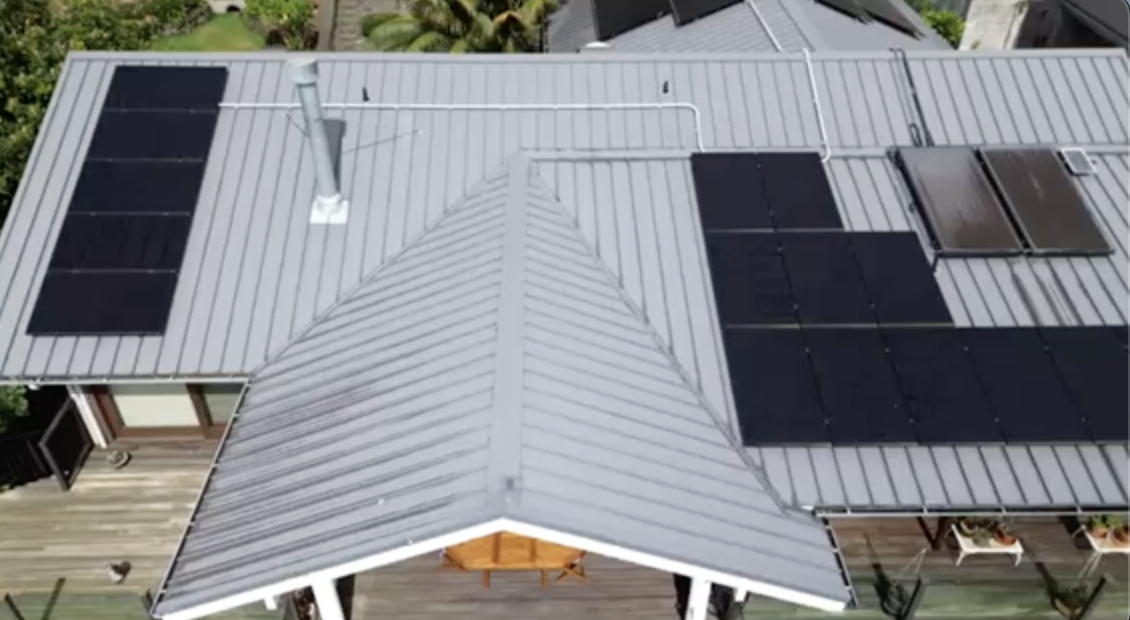
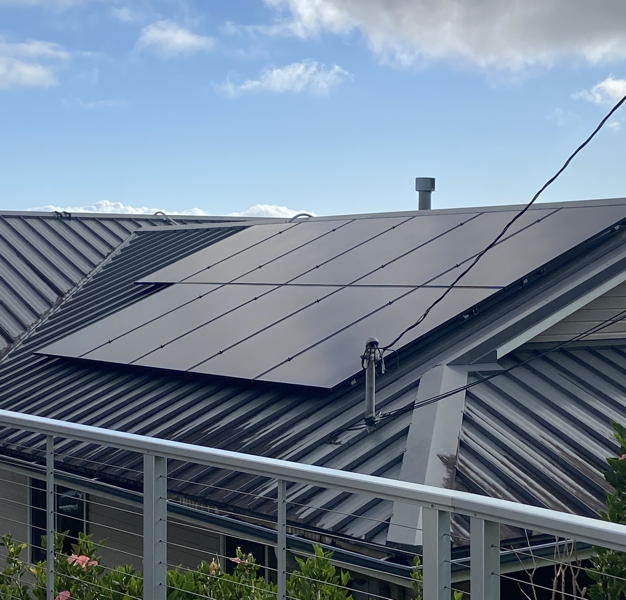
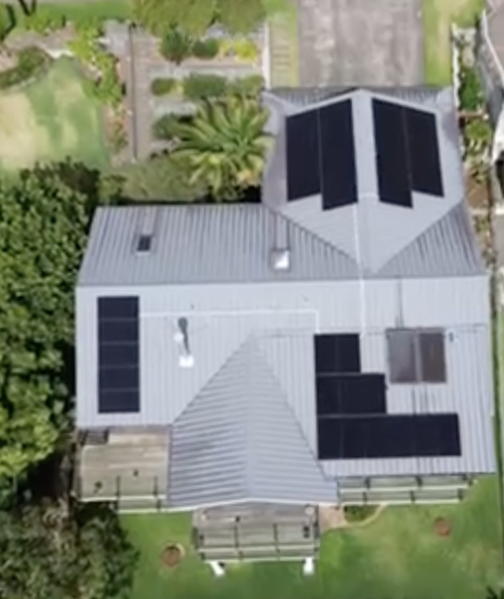
In
2019 we installed 19 solar panels and a single Tesla Powerwall
in our suburban Chicago bungalow. This is documented here.
In
2024 we moved from Illinois to the Big Island of Hawai'i.
Power
costs in Hawai'i are about 4 times as much as Illinois, given
that 50% of power generation on the Big Island is from oil,
and that oil needs to
be shipped in from the mainland. Since we have two electric
cars, the electricity costs can add up quickly. $550 monthly
electricity bills were common before installing solar panels.
Unlike Illinois, natural gas lines are not common in Hawai'i,
but small propane tanks are common for cooking. The stove that
came with our house had a propane connection, but we removed the
propane tanks, and upgraded to an induction range after running
a 240v line to the kitchen. This also increased our electricity
usage.
The
house came with solar water heating but no solar panels. We
started getting quotes in January 2024 and were up and running
in mid May 2024. We installed 38 east, west, and south facing solar
panels and 3 Powerwalls.

|


|
As
in Illinois, without the Powerwalls we would not be able to use
our solar power if there is a power failure. Short power
failures are not uncommon on the Big Island and there is a
potential for longer term outages in case of fires or hurricanes
passing by, so we added more Powerwalls this time.
The 3 Powerwall 2s can store 42kWh with a max discharge
rate of 15 kW. The
Powerwalls also increase the maximum amount of instantaneous
power they can generate, and with electric car charging, an
induction stove, and an electric clothes dryer, our maximum
power draw does occasionally get to 15 kW. On a typical night
we will use up about one Powerwall worth of power through cooking,
and the two dehumidifiers we run all night.
We typically use about half of the power that we produce, as we
had sized our system on the assumption that we would be driving
our electric cars more.
The up front cost of the system (solar panels plus power walls
plus installation) is $104,000. We should receive $31,000 back
as a federal tax credit, and $16,000 as a state tax credit, so
the total cost should be $56,000. This does cost almost double
compared to the Illinois install on a per panel basis, but
things cost more in Hawai'i. We should be saving about $500
per month, so at current rates it will take about 10 years to
recoup the cost of the system.
As in Illinois we get credit for any excess power that we send back to the grid, but unlike Illinois we only get partial credit. We are credited for 11 cents per kWh produced but electricity costs 29 cents to 40 cents per kWh depending on the time of day it is consumed. We can not make money sending power back to the grid, but we can offset any days where we do need to use grid power, typically when we have people visiting and drive around a lot during the day and don't have time to recharge from solar. Also as in Illinois we need to pay a monthly fee (in this case $30) to stay connected to the grid.
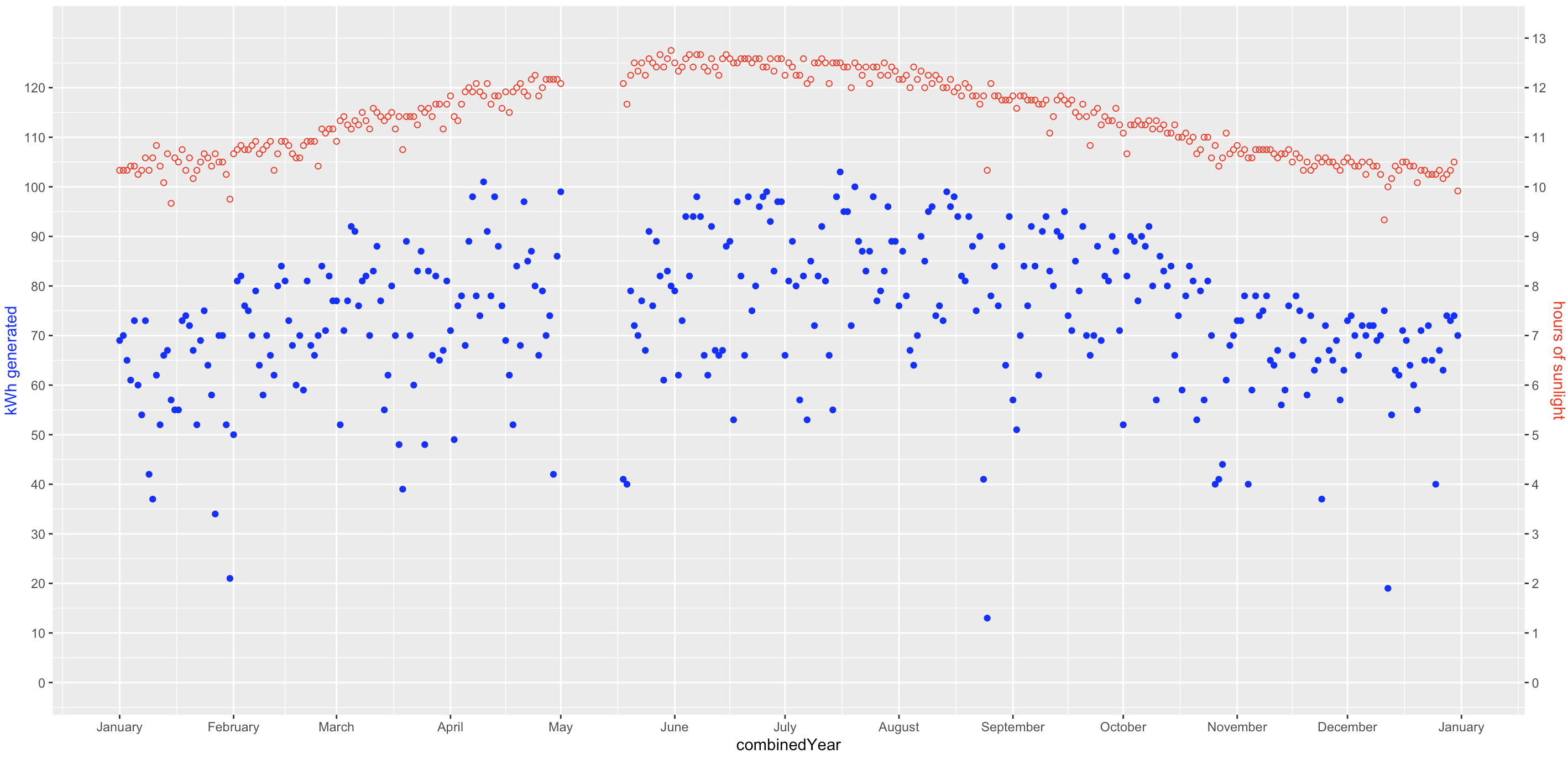
| Jan |
Feb |
Mar |
Apr |
May |
Jun |
Jul |
Aug |
Sep |
Oct |
Nov |
Dec |
|
| 2024 |
|
|
|
|
1020* |
2510 | 2580 | 2490 | 2400 | 2255 | 2010 | 2050 |
| 2025 |
1890 | 2020 | 2275 | 2330 | 2695 | 2385 | 2520 | 2470 | 2270 | 2005 | 1820 | 1815 |
As in Illinois we use the tesla app for
monitoring the overall system and the Enphase app to monitor specific panels.
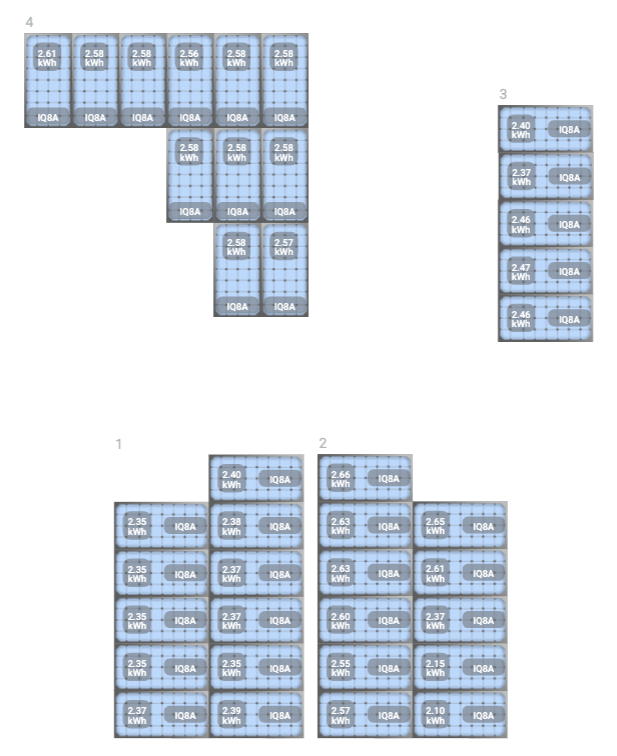
- Google's Project Sunroof -
https://www.google.com/get/sunroof
- Home Energy Tax Credits - https://www.irs.gov/credits-deductions/home-energy-tax-credits
- Tesla Powerwall -
https://www.tesla.com/powerwall
last updated December 31, 2025
copyright 2024-2025 Andy
Johnson